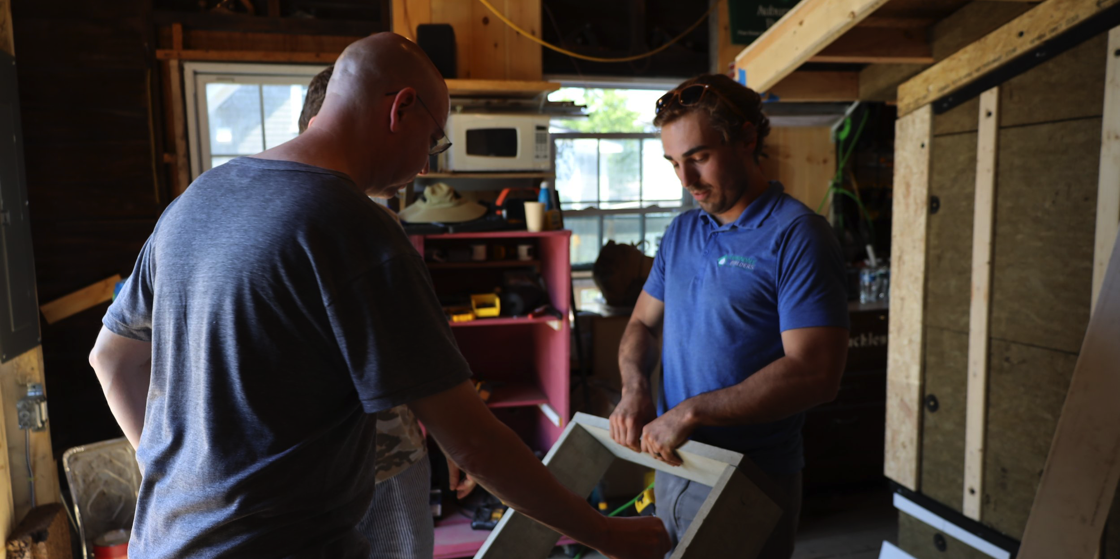Buildings like homes, offices, and schools are responsible for over 40% of global energy use and greenhouse gas emissions, making them one of the largest contributors to climate change. The Studio for High-Performance Design + Construction (Studio HPDC) in Nonantum, however, is a non-profit working to change this by educating students, architects, and tradespeople about sustainable design and construction practices. The following responses are from an interview with Amy Lieb, the Executive Director of Studio HPDC, on the studio’s mission and the impactful work they are doing.
What is the challenge or need that led to the creation of Studio HPDC, and how does your approach address this challenge?
The basic challenge for those of us that are in the construction or buildings world is that our built environment–our homes, our schools, our churches, our hospitals, our office buildings–contribute about 40% of the greenhouse gasses that are creating the significant impacts around climate change. At this point we actually know a lot of good practices that can reduce energy usage, that can include materials that are less harmful to the humans that live in them, that can increase our indoor air quality, and protect us from external challenges. But, our workforce still needs to be trained so that they can actually deliver upon the promise of all of those high performance passive house techniques and the materials that would create the solutions. The core challenge that the studio tries to address is, “How do we actually accelerate our buildings and construction workforce in terms of knowledge and core capabilities to make sure that we have the buildings that we need now and into the future?”
What is the mission of Studio HPDC?
The core mission is to improve the sustainable building practices in the construction industry. We focus largely on residential buildings, and we do it through the education and training.
As a classroom and educational center for sustainable design & construction, how is Studio HPDC helping to educate industry professionals in the community on high efficiency building techniques to reduce energy use?
I think of the Studio as being a host for all the conversations and all the questions that people in this general area have around high performance practices, materials and pass-about standards. And so we offer a space for people to have their own forums, to bring together their own groups. And in addition, we often act as the convener or the facilitator to bring groups together. So I think that is two ways that we use the classroom space itself. Our vision is not that this studio trains millions of people to be the workforce. Our vision is that we work with lots of different voices and try to come together on a, “Well, here is something we could do that would achieve the education or the training goals.”
For community members who are inspired by your work, what are the different ways they can get involved with or support Studio HPDC’s mission?
If there is work that other community organizations are doing, where they need a space to bring together to have a meeting, please reach out to us at Studio. We’re happy to have you use our space, and it also helps expose us. If you’re in the building industry and you are looking to train part of your workforce, we’ll be running courses over the winter. Not only would I love to connect building teams into our courses, but we’re also looking for volunteer instructors and facilitators. And then the third part, of course, is sponsorship.
Through education and community engagement, Studio HPDC is not only transforming the way we approach construction but also inspiring a new generation to create a more sustainable world.
Author Devan Kathiresan is a junior at Milton Academy and a Green Newton intern.



Recently on Twitter